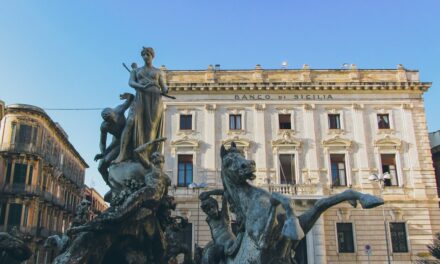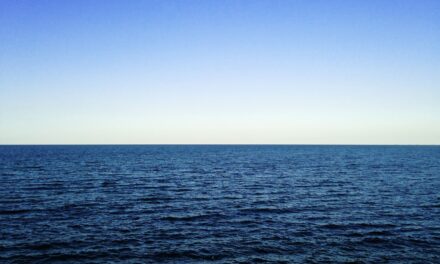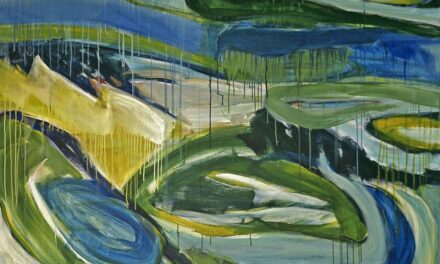Paul Gauguin was born on 7 June 1848 in Paris, France. His father, Clovis Gauguin, worked as a journalist, whilst his mother, Aline Chazal, was the daughter of socialist leader Flora Tristan. Gauguin’s early life was marked by tragedy; his father died when he was merely seven years old, and his mother passed away when he was thirteen.
Following the death of his parents, Gauguin and his sister were sent to live with their paternal grandfather in Orléans. This challenging period in his life had a significant impact on Gauguin and would later influence his artistic work. Gauguin initially pursued a career as a stockbroker and became a successful businessman.
However, he soon grew disenchanted with the materialistic nature of society and decided to pursue his passion for art. In 1873, he began painting in his spare time and formed friendships with Impressionist painters Camille Pissarro and Paul Cézanne. These early experiences would shape Gauguin’s artistic style and set him on a trajectory towards becoming one of the most influential artists of the 19th century.
Summary
- Early Life and Background:
- Born in Paris in 1848
- Studied at the École des Beaux-Arts
- Struggled with poverty and mental health issues
- Artistic Influences and Style:
- Influenced by Impressionism and Symbolism
- Known for vibrant colours and bold brushwork
- Often depicted scenes of everyday life
- Travels and Exploration:
- Travelled to Brittany and Arles
- Inspired by the landscapes and people he encountered
- Suffered from mental health issues during his travels
- Tahitian Period:
- Moved to Tahiti in 1891
- Explored themes of exoticism and primitivism
- Created some of his most famous works during this time
- Legacy and Impact:
- Considered a pioneer of modern art
- Influenced generations of artists
- His works continue to be celebrated and studied
- Controversies and Criticisms:
- Accused of cultural appropriation and exoticism
- Criticised for his treatment of women in his paintings
- Some questioned the authenticity of his Tahitian period works
- Major Works and Collections:
- “The Starry Night”
- “The Yellow House”
- “Where Do We Come From? What Are We? Where Are We Going?”
Artistic Influences and Style
Influence of Vincent van Gogh
Gauguin’s style is characterised by bold colours, simplified forms, and a rejection of naturalistic representation. He often used flat areas of colour and strong outlines to create a sense of depth and perspective in his paintings.
Brittany and the Emergence of Symbolism
One of Gauguin’s most distinctive artistic influences was his time spent in Brittany, where he was exposed to the local culture and traditions. This experience had a profound impact on his work, leading him to incorporate elements of symbolism and primitivism into his art.
Travels and the Fusion of European and Non-Western Art
Gauguin was also influenced by his travels to Martinique and Panama, where he was exposed to indigenous art and culture. These experiences led him to develop a unique artistic style that combined elements of European and non-Western art, setting him apart from his contemporaries.
Travels and Exploration

Gauguin was known for his adventurous spirit and love of travel. In 1887, he made his first trip to Pont-Aven in Brittany, where he was inspired by the local culture and traditions. This experience marked the beginning of Gauguin’s exploration of different cultures and would later influence his decision to travel to Tahiti in search of a more primitive way of life.
In 1891, Gauguin embarked on a journey to Martinique, where he was captivated by the vibrant colours and exotic landscapes. Gauguin’s travels to Panama in 1887 also had a significant impact on his art. During this trip, he was exposed to indigenous art and culture, which inspired him to incorporate elements of non-Western art into his work.
These experiences broadened Gauguin’s artistic horizons and led him to develop a unique style that combined elements of European and non-Western art.
Tahitian Period
Gauguin’s most famous period is undoubtedly his time spent in Tahiti. In 1891, he made the decision to leave France and travel to Tahiti in search of a more primitive way of life. This period marked a significant shift in Gauguin’s artistic style, as he began to incorporate elements of Tahitian culture and traditions into his work.
His paintings from this period are characterised by vibrant colours, exotic landscapes, and depictions of Tahitian people. During his time in Tahiti, Gauguin developed a deep appreciation for the local culture and traditions. He immersed himself in the Tahitian way of life, learning about their customs, beliefs, and mythology.
This experience had a profound impact on his art, leading him to create some of his most iconic works, such as “The Spirit of the Dead Watching” and “Tahitian Women on the Beach”. Gauguin’s time in Tahiti not only influenced his artistic style but also had a lasting impact on the way Western audiences perceived non-Western cultures.
Legacy and Impact
Gauguin’s legacy as an artist is undeniable, as he is widely regarded as one of the most influential painters of the 19th century. His unique artistic style and exploration of non-Western cultures had a profound impact on the development of modern art. Gauguin’s use of bold colours, simplified forms, and rejection of naturalistic representation paved the way for future artistic movements such as Fauvism and Primitivism.
Gauguin’s legacy also extends beyond his artistic contributions, as he played a significant role in shaping the way Western audiences perceived non-Western cultures. His depictions of Tahitian life challenged traditional notions of exoticism and primitivism, leading to a greater appreciation for non-Western art and culture. Gauguin’s influence can be seen in the work of artists such as Pablo Picasso and Henri Matisse, who were inspired by his use of colour and form.
Controversies and Criticisms

A Quest for Primitivism
His decision to abandon his family and travel to Tahiti in pursuit of a more primitive way of life has been widely condemned, with many accusing him of exploiting the local culture for his own benefit.
Troubling Relationships
Gauguin’s relationships with young Tahitian girls have also been the subject of controversy, with some accusing him of engaging in exploitative and abusive behaviour. His treatment of women has been a source of criticism throughout history, with many pointing to his relationships with young girls as evidence of his problematic behaviour.
A Legacy Re-evaluated
His paintings often depict young Tahitian women in sensual poses, leading to accusations of objectification and exoticism. These controversies have led to a re-evaluation of Gauguin’s legacy, with many questioning whether his artistic achievements can be separated from his personal actions.
Major Works and Collections
Gauguin’s most famous works include “The Spirit of the Dead Watching”, “Tahitian Women on the Beach”, “Where Do We Come From? What Are We? Where Are We Going?”, and “The Yellow Christ”.
These paintings are considered some of the most iconic works of the 19th century and have had a lasting impact on the development of modern art. Gauguin’s paintings are characterised by their bold colours, simplified forms, and rejection of naturalistic representation. Many of Gauguin’s major works can be found in prominent art collections around the world.
The Musée d’Orsay in Paris houses a significant collection of Gauguin’s paintings, including “The Vision After the Sermon” and “Tahitian Women on the Beach”. The Metropolitan Museum of Art in New York also has several important works by Gauguin, such as “The Seed of the Areoi” and “Te Fare (La Maison)”. These paintings continue to attract visitors from around the world and serve as a testament to Gauguin’s enduring legacy as an artist.
If you are interested in learning more about the different art movements that influenced Paul Gauguin’s work, you should check out this article on Impressionism. Impressionism was a key influence on Gauguin’s early work, and understanding this movement can provide valuable context for appreciating his art.
FAQs
Who was Paul Gauguin?
Paul Gauguin was a French post-impressionist artist known for his bold use of color and his influential work in the Symbolist and Primitivist movements. He was born in Paris in 1848 and died in the Marquesas Islands in 1903.
What is Paul Gauguin known for?
Gauguin is known for his paintings, sculptures, and woodcuts that often depicted scenes from his travels to exotic locations such as Tahiti and the Marquesas Islands. He is also known for his use of bold colors and simplified forms, as well as his rejection of traditional European artistic conventions.
What are some of Paul Gauguin’s most famous works?
Some of Gauguin’s most famous works include “The Yellow Christ,” “Tahitian Women on the Beach,” “Where Do We Come From? What Are We? Where Are We Going?,” and “The Vision After the Sermon (Jacob Wrestling with the Angel).”
What influenced Paul Gauguin’s art?
Gauguin was influenced by a variety of artistic styles and movements, including Impressionism, Japanese woodcuts, and the art of the ancient Egyptians and Peruvians. He was also influenced by his travels to exotic locations, which inspired him to incorporate elements of primitivism and symbolism into his work.
What is the legacy of Paul Gauguin?
Gauguin’s legacy is that of an artist who pushed the boundaries of traditional European art and paved the way for modernist movements such as Fauvism and Expressionism. His bold use of color and rejection of naturalistic representation continue to influence artists to this day. However, his legacy is also controversial due to his personal life and the way he depicted the people and cultures he encountered in his travels.




